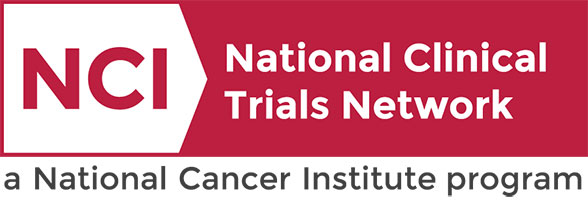Clinical Trials Search at Vanderbilt-Ingram Cancer Center
RBS2418 Evaluation in Subjects With Unresectable or Metastatic Tumors
Phase I
Phase I
RBS2418 (investigational product) is a specific immune modulator, working through
ectonucleotide pyrophosphatase/phosphodiesterase I (ENPP1), designed to lead to anti-tumor
immunity by increasing endogenous 2'-3'-cyclic guanosine monophosphate-adenosine
monophosphate (cGAMP) and adenosine triphosphate (ATP levels) and reducing adenosine
production in the tumors. RBS2418 has the potential to be an important therapeutic option for
subjects both as monotherapy and in combination with checkpoint blockade. This study is an
open-label, multi-site Phase 1a/1b study of RBS2418, a selective ENPP1 inhibitor, in
combination with pembrolizumab or as a monotherapy in subjects with advanced unresectable,
recurrent or metastatic tumors.
ectonucleotide pyrophosphatase/phosphodiesterase I (ENPP1), designed to lead to anti-tumor
immunity by increasing endogenous 2'-3'-cyclic guanosine monophosphate-adenosine
monophosphate (cGAMP) and adenosine triphosphate (ATP levels) and reducing adenosine
production in the tumors. RBS2418 has the potential to be an important therapeutic option for
subjects both as monotherapy and in combination with checkpoint blockade. This study is an
open-label, multi-site Phase 1a/1b study of RBS2418, a selective ENPP1 inhibitor, in
combination with pembrolizumab or as a monotherapy in subjects with advanced unresectable,
recurrent or metastatic tumors.
Phase I
I
Berlin, Jordan
NCT05270213
VICCPHI2289
A Clinical Trial of Four Medicines (Elranatamab Plus Carfilzomib and Dexamethasone or Maplirpacept) in People With Relapsed Refractory Multiple Myeloma
The main purpose of the study is to evaluate the safety and tolerability of the combination
of elranatamab and carfilzomib and dexamethasone or elranatamab and maplirpacept.
There are 2 parts to this study. Part 1 will evaluate the safety and tolerability of
elranatamab when given in combination with carfilzomib plus dexamethasone. Part 2 has 2 arms.
The first will evaluate the safety and tolerability of elranatamab when given in combination
with maplirpacept. The second will identify the optimal dose(s) of elranatamab plus
maplirpacept.
All study medicines are given over 4-week cycles. Everyone taking part in this study will
receive elranatamab as a shot under the skin. Participants in Part 1 will also receive weekly
carfilzomib as an IV infusion (given directly into a vein) and dexamethasone either by mouth
(as a pill) or by IV infusion. Participants in Part 2 will receive elranatamab in combination
with maplirpacept as an IV infusion (given directly into a vein)
The investigators will examine the experiences of people receiving the study medicines. This
will help determine if the study medicines are safe and can be used for multiple myeloma
treatment. Participants will take part in this study for about 2 years after the first dose.
of elranatamab and carfilzomib and dexamethasone or elranatamab and maplirpacept.
There are 2 parts to this study. Part 1 will evaluate the safety and tolerability of
elranatamab when given in combination with carfilzomib plus dexamethasone. Part 2 has 2 arms.
The first will evaluate the safety and tolerability of elranatamab when given in combination
with maplirpacept. The second will identify the optimal dose(s) of elranatamab plus
maplirpacept.
All study medicines are given over 4-week cycles. Everyone taking part in this study will
receive elranatamab as a shot under the skin. Participants in Part 1 will also receive weekly
carfilzomib as an IV infusion (given directly into a vein) and dexamethasone either by mouth
(as a pill) or by IV infusion. Participants in Part 2 will receive elranatamab in combination
with maplirpacept as an IV infusion (given directly into a vein)
The investigators will examine the experiences of people receiving the study medicines. This
will help determine if the study medicines are safe and can be used for multiple myeloma
treatment. Participants will take part in this study for about 2 years after the first dose.
Not Available
I
Baljevic, Muhamed
NCT05675449
VICC-DTPCL23011P
Study of INBRX-106 and INBRX-106 in Combination With Pembrolizumab in Subjects With Locally Advanced or Metastatic Solid Tumors (Hexavalent OX40 Agonist)
Phase I
Phase I
This is a Phase 1/2, open-label, non-randomized, 4-part Phase 1 trial to determine the safety
profile and identify the maximum tolerated dose (MTD) and/or recommended Phase 2 dose (RP2D)
of INBRX 106 administered as a single agent or in combination with the anti-PD-1 checkpoint
inhibitor (CPI) pembrolizumab (Keytruda).
profile and identify the maximum tolerated dose (MTD) and/or recommended Phase 2 dose (RP2D)
of INBRX 106 administered as a single agent or in combination with the anti-PD-1 checkpoint
inhibitor (CPI) pembrolizumab (Keytruda).
Phase I
I
Davis, Elizabeth
NCT04198766
VICCPHI2135
A First-in-human Study of PRTH-101 Monotherapy +/- Pembrolizumab in Subjects With Advanced Malignancies
The goal of this Open-Label Study is to evaluate the safety and tolerability of PRTH-101
alone or in combination with pembrolizumab in adults with advance or metastatic solid tumors.
alone or in combination with pembrolizumab in adults with advance or metastatic solid tumors.
Not Available
I
Berlin, Jordan
NCT05753722
VICC-DTPHI23182
Genetic Testing to Select Therapy for the Treatment of Advanced or Metastatic Kidney Cancer, OPTIC RCC Study
Kidney (Renal Cell)
Kidney (Renal Cell)
This phase II trial tests whether using genetic testing of tumor tissue to select the optimal treatment regimen works in treating patients with clear cell renal cell (kidney) cancer that has spread to other places in the body (advanced or metastatic). The current Food and Drug Administration (FDA)-approved regimens for advanced kidney cancer fall into two categories. One treatment combination includes two immunotherapy drugs (nivolumab plus ipilimumab), which are delivered by separate intravenous infusions into a vein. The other combination is one immunotherapy drug (nivolumab infusion) plus an oral pill taken by mouth (cabozantinib). Nivolumab and ipilimumab are immunotherapies which release the brakes of the immune system, thus allowing the patient's own immune system to better kill cancer cells. Cabozantinib is a targeted therapy specifically designed to block certain biological mechanisms needed for growth of cancer cells. In kidney cancer, cabozantinib blocks a tumors blood supply. The genetic (DNA) makeup of the tumor may affect how well it responds to therapy. Testing the makeup (genes) of the tumor, may help match a treatment (from one of the above two treatment options) to the specific cancer and increase the chance that the disease will respond to treatment. The purpose of this study is to learn if genetic testing of tumor tissue may help doctors select the optimal treatment regimen to which advanced kidney cancer is more likely to respond.
Kidney (Renal Cell)
II
Rini, Brian
NCT05361720
VICCURO21103
Surgical Debulking Prior to Peptide Receptor Radionuclide Therapy in Patients with Well Differentiated Gastroenteropancreatic Neuroendocrine Tumors
Multiple Cancer Types
This phase IV trial evaluates how well giving standard of care (SOC) peptide receptor radionuclide therapy (PRRT) after SOC surgical removal of as much tumor as possible (debulking surgery) works in treating patients with grade 1 or 2, somatostatin receptor (SSTR) positive, gastroenteropancreatic neuroendocrine tumors (GEP-NETs) that have spread from where they first started (primary site) to the liver (hepatic metastasis). Lutetium Lu 177 dotatate is a radioactive drug that uses targeted radiation to kill tumor cells. Lutetium Lu 177 dotatate includes a radioactive form (an isotope) of the element called lutetium. This radioactive isotope (Lu-177) is attached to a molecule called dotatate. On the surface of GEP-NET tumor cells, a receptor called a somatostatin receptor binds to dotatate. When this binding occurs, the lutetium Lu 177 dotatate drug then enters somatostatin receptor-positive tumor cells, and radiation emitted by Lu-177 helps kill the cells. Giving lutetium Lu 177 dotatate after surgical debulking may better treat patients with grade 1/2 GEP-NETs.
Colon,
Esophageal,
Gastric/Gastroesophageal,
Gastrointestinal,
Liver,
Pancreatic,
Rectal
N/A
Idrees, Kamran
NCT06016855
VICCGI2283
A Study to Compare Treatment with the Drug Selumetinib Alone versus Selumetinib and Vinblastine in Patients with Recurrent or Progressive Low-Grade Glioma
This phase III trial investigates the best dose of vinblastine in combination with selumetinib and the benefit of adding vinblastine to selumetinib compared to selumetinib alone in treating children and young adults with low-grade glioma (a common type of brain cancer) that has come back after prior treatment (recurrent) or does not respond to therapy (progressive). Selumetinib is a drug that works by blocking a protein that lets tumor cells grow without stopping. Vinblastine blocks cell growth by stopping cell division and may kill cancer cells. Giving selumetinib in combination with vinblastine may work better than selumetinib alone in treating recurrent or progressive low-grade glioma.
Not Available
III
Esbenshade, Adam
NCT04576117
COGACNS1931
Pembrolizumab after Radiation Therapy and Chemotherapy in Treating Patients with Limited Stage Small Cell Lung Cancer
Lung
Lung
This phase II trial studies how well pembrolizumab after standard treatment with radiation plus the following chemotherapy drugs: cisplatin or carboplatin, plus etoposide works in treating patients with limited stage small cell lung cancer (LS-SCLC). Immunotherapy with monoclonal antibodies, such as pembrolizumab, may help the body's immune system attack the cancer, and may interfere with the ability of tumor cells to grow and spread. Giving pembrolizumab after standard treatment with radiation plus chemotherapy may increase the ability of the immune system to fight LS-SCLC.
Lung
II
Whitaker, Ryan
NCT06140407
VICCTHO22114
An Imaging Agent (Panitumumab-IRDye800) for the Detection of Head and Neck Cancer During Surgery
Head/Neck
Head/Neck
This phase II trial studies the effect of panitumumab-IRDye800 in detecting head and neck cancer during surgery in patients head and neck cancer. Doctors who perform surgery for head and neck cancer are well-trained in removing all of the cancer that can be seen during the operation; however, there are times when there is cancer that is so small that it cannot be seen by the surgeon. Panitumumab-IRDye800 is a combination of panitumumab and IRDye800CW. Panitumumab works by attaching to the cancer cell in a unique way that allows the drug to get into the cancer tissue. IRDye800CW is an investigational dye that, when tested in the laboratory, helps various characteristics of human tissue show up better when using a special camera. Panitumumab-IRDye800 is a combination of the drug and the dye that attaches to cancer cells and appears to make them visible to the doctor when he or she uses the special camera during the surgery. Giving panitumumab-IRDye800 may help doctors better identify cancer in the operating room.
Head/Neck
II
Rosenthal, Eben
NCT04511078
VICCHN21109
Evexomostat Plus Alpelisib and Fulvestrant in Women With the PIK3CA Mutation With HR+/Her2- Breast Cancer
The PIK3CA gene is frequently mutated in breast cancer, leading to disease aggressiveness and
patient mortality. Alpelisib, a small molecule that inhibits the activity of the PIK3CA gene
product PI3K, has demonstrated clinical benefit in cancer patients with this gene mutation.
However, hyperglycemia, an on-target toxicity associated with alpelisib that leads to
hyperinsulinemia, limits the drug's clinical efficacy and induces high grade hyperglycemia in
patients with baseline metabolic dysfunction, insulin resistance and/or elevated HbA1c.
Restoring insulin sensitivity and reduction in circulating concentrations of insulin have
been reported to improve the activity of alpelisib.
Evexomostat (SDX-7320) is a polymer-conjugate of a novel small molecule methionine
aminopeptidase 2 (MetAP2) inhibitor that has demonstrated the ability to reduce
alpelisib-induced hyperglycemia in multiple animal experiments and has demonstrated
synergistic anti-tumor activity independent of changes in glucose or insulin. Evexomostat was
well tolerated in a Phase 1 safety study in late-stage cancer patients and showed
improvements in insulin resistance for patients that presented with baseline elevated
insulin. Overall, the most common treatment-emergent adverse events with evexomostat (TEAEs)
were fatigue (44%), decreased appetite (38%), constipation and nausea (each 28%), and
diarrhea (22%). All other TEAEs occurred at an incidence <20%.
The purpose of this study is to characterize the safety of the triplet drug combination
(alpelisib, fulvestrant plus evexomostat), to test whether evexomostat, when given in
combination with alpelisib and fulvestrant will reduce the number and severity of
hyperglycemic events and/or reduce the number of anti-diabetic medications needed to control
the hyperglycemia for patients deemed at risk for alpelisib-induced hyperglycemia (baseline
elevated HbA1c or well-controlled type 2 diabetes), and to assess preliminary anti-tumor
efficacy and changes in key biomarkers and quality of life in this patient population.
patient mortality. Alpelisib, a small molecule that inhibits the activity of the PIK3CA gene
product PI3K, has demonstrated clinical benefit in cancer patients with this gene mutation.
However, hyperglycemia, an on-target toxicity associated with alpelisib that leads to
hyperinsulinemia, limits the drug's clinical efficacy and induces high grade hyperglycemia in
patients with baseline metabolic dysfunction, insulin resistance and/or elevated HbA1c.
Restoring insulin sensitivity and reduction in circulating concentrations of insulin have
been reported to improve the activity of alpelisib.
Evexomostat (SDX-7320) is a polymer-conjugate of a novel small molecule methionine
aminopeptidase 2 (MetAP2) inhibitor that has demonstrated the ability to reduce
alpelisib-induced hyperglycemia in multiple animal experiments and has demonstrated
synergistic anti-tumor activity independent of changes in glucose or insulin. Evexomostat was
well tolerated in a Phase 1 safety study in late-stage cancer patients and showed
improvements in insulin resistance for patients that presented with baseline elevated
insulin. Overall, the most common treatment-emergent adverse events with evexomostat (TEAEs)
were fatigue (44%), decreased appetite (38%), constipation and nausea (each 28%), and
diarrhea (22%). All other TEAEs occurred at an incidence <20%.
The purpose of this study is to characterize the safety of the triplet drug combination
(alpelisib, fulvestrant plus evexomostat), to test whether evexomostat, when given in
combination with alpelisib and fulvestrant will reduce the number and severity of
hyperglycemic events and/or reduce the number of anti-diabetic medications needed to control
the hyperglycemia for patients deemed at risk for alpelisib-induced hyperglycemia (baseline
elevated HbA1c or well-controlled type 2 diabetes), and to assess preliminary anti-tumor
efficacy and changes in key biomarkers and quality of life in this patient population.
Not Available
I/II
Rexer, Brent
NCT05455619
VICCBREP2271


